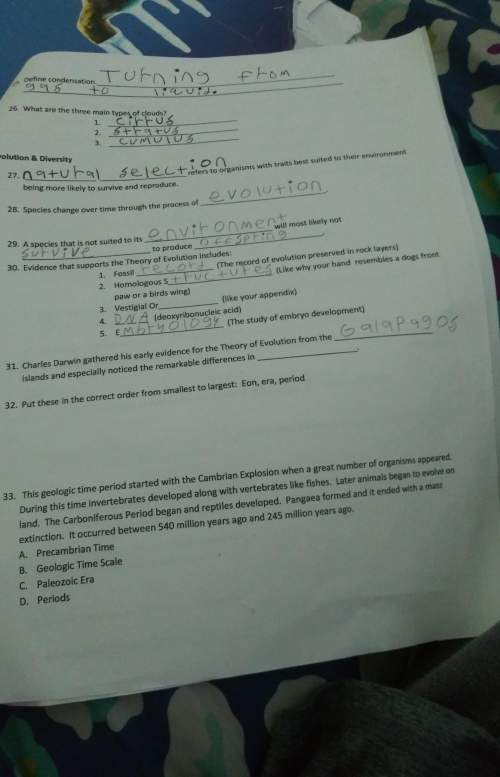
Physics, 18.09.2019 01:00 yuki430p7szcq
Point charge q1 = -5.00 nc is at the origin and point charge q2 = +3.00 nc is on the x-axis at x = 3.00 cm. point p is on the y-axis at y = 4.00 cm. (a) calculate the electric fields e s 1 and e s 2 at point p due to the charges q1 and q2 . express your results in terms of unit vectors (see example 21.6). (b) use the results of part (a) to obtain the resultant field at p, expressed in unit vector form.

Answers: 2


Other questions on the subject: Physics

Physics, 22.06.2019 03:00, emilypzamora11
If a spring has a k value of 100 newtons per meter and it is stretched 0.50 meters, what is the restoring force of the spring?
Answers: 2

Physics, 22.06.2019 04:00, DragonLovely
19. explain why a magnet from your refrigerator could not be used to lift something as heavy as a car. (chapter 7 – pages 202-203) 20. can a magnet ever have a single pole? explain your answer. (chapter 7 – page 208) 21. what happens to the wavelength of a wave if the frequency is increased? (chapter 9 – pages 280-281) 22. an ocean wave has a wavelength of 10 m and a frequency of 4.0 hz. what is the velocity of the wave? show the appropriate equation from your book and show your work with units. (chapter 9 – page 282) 23. as you sit outside, the sound of a siren becomes lower in pitch. is the emergency vehicle moving away from or towards you? explain how you know. (chapter 10 – page 315-316) 24. why are two astronauts in space unable to hear one another? (chapter 10 – page 307) 25. explain in at least 3 sentences how electromagnetic waves form. (chapter 11 – page 338-339) 26. using the chart on page 345 in your textbook, what are the three types of electromagnetic wave with wavelengths shorter than those of visible light. give an example of each. (chapter 11 – pages 345-351) 27. explain why a leaf usually appears to be green, but a rose typically appears red. (chapter 12 – page 373) 28. what is the difference in light that is refracted compared to light that is reflected? think in terms of speed of light as well as what happens to light waves when they interact with a medium. (chapter 12 – pages 369-370) 29. how are concave and convex lenses different? (chapter 13 – page 408-410) 30. what type of mirror is used in rearview mirrors in cars? why is it important that these mirrors have the warning, “objects in mirror are closer than they appear.”? (chapter 13 – page 405)
Answers: 3

Physics, 22.06.2019 04:30, tayveon122
Light that is polarized along the vertical direction is incident on a sheet of polarizing material. only 96% of the intensity of the light passes through the sheet and strikes a second sheet of polarizing material. no light passes through the second sheet. what angle does the transmission axis of the second sheet make with the vertical?
Answers: 2

Physics, 22.06.2019 05:20, niescarlosj
A3.9 g aluminum foil ball with a charge of +4.1×10−9 c is suspended on a string in a uniform horizontal e⃗ field. the string deviates to the right and makes an angle of 30∘ with the vertical. part a part complete what information about the e⃗ field can you determine for this situation? what information about the field can you determine for this situation? only the magnitude of e⃗ only the direction of e⃗ both the magnitude and the direction of e⃗ none of the above previous answers correct part b determine the magnitude of the electric field. express your answer with the appropriate units. e e = nothing nothing request answer part c determine the direction of the electric field. determine the direction of the electric field. to the right to the left away from you toward you
Answers: 3
You know the right answer?
Point charge q1 = -5.00 nc is at the origin and point charge q2 = +3.00 nc is on the x-axis at x = 3...
Questions in other subjects:

Mathematics, 05.03.2021 01:00

Mathematics, 05.03.2021 01:00

Mathematics, 05.03.2021 01:00



English, 05.03.2021 01:00




Mathematics, 05.03.2021 01:00






